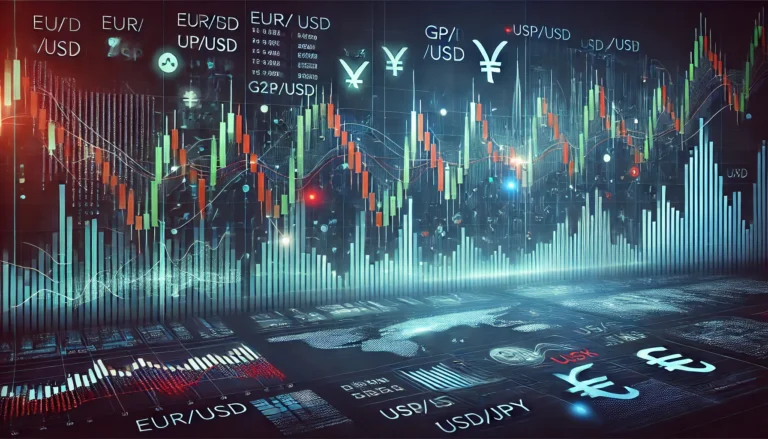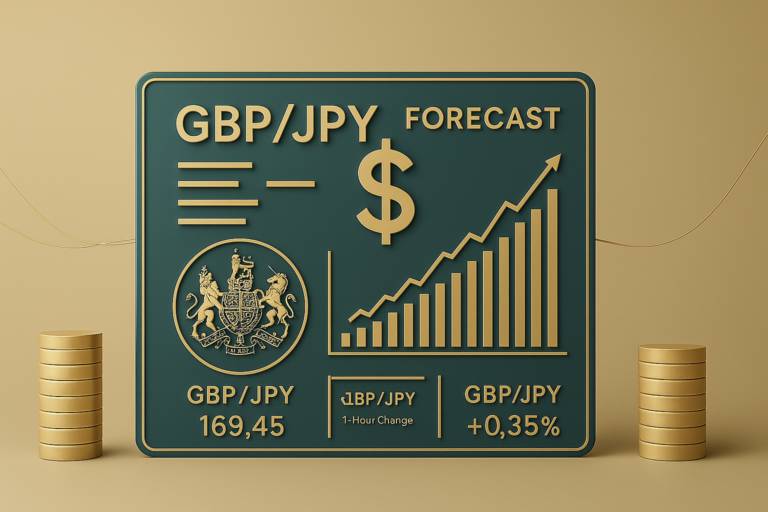
Chart traders utilize visual analysis in Forex trading, but misinterpretation can lead to losses.
Chart traders are individuals who rely heavily on charts to make decisions in Forex trading. These charts provide a visual representation of price movements, allowing traders to analyze trends, patterns, and potential future movements. Understanding these charts is crucial for anyone looking to succeed in Forex trading.
However, both beginners and seasoned professionals often struggle with reading charts effectively. The complexity of chart patterns and the multitude of indicators can be overwhelming. Moreover, emotions and market volatility can cloud judgment, leading to poor trading decisions. Therefore, grasping the fundamentals of chart trading is not just beneficial, but essential for long-term success.
Take a moment to check out the GBPJPY analysis September 05, 2025 for insights on the market’s direction that day.
Understanding the Chart Traders
The main issue faced by chart traders is misinterpretation of price movements. Many traders may see a pattern and jump to conclusions without fully understanding the context. This often leads to impulsive decisions that can result in losses. For instance, a trader may see a bullish pattern and decide to buy, only for the price to reverse unexpectedly.
This misinterpretation often occurs due to technical factors, such as lagging indicators or noise in the market. Market-related reasons, like sudden news announcements or economic data releases, can also cause unexpected price movements. Imagine a trader relying solely on an indicator that signals a buy, while an upcoming economic report could change everything. The result? A lost opportunity or even a significant loss.
Pro’s and Con’s for Chart Traders
For professional traders, chart analysis can be a powerful tool. However, it comes with its advantages and disadvantages. Let’s explore them:
Pros
- Clear Visuals: Charts provide a clear visual representation of market movements.
- Pattern Recognition: Traders can identify trends and patterns over time.
- Data-Driven Decisions: Analysis is based on historical data and trends.
Cons
- Overcomplication: Too many indicators can confuse traders.
- Emotional Trading: Traders may act on emotions rather than analysis.
- Market Noise: Short-term fluctuations can lead to false signals.
To mitigate these issues, chart traders can adopt several best practices:
- Stick to a Strategy: Have a clear trading plan based on specific criteria.
- Limit Indicators: Use only a few reliable indicators to avoid confusion.
- Stay Updated: Keep abreast of market news that could impact trades.
For advanced traders, consider incorporating tools like the sail moving average to enhance your analysis and decision-making process.
Frequently Asked Questions
Question 1: How can I read charts effectively as a beginner?
Reading charts as a beginner involves focusing on key elements like trends, support, and resistance levels. Start with basic candlestick patterns and gradually introduce more complex indicators. For example, practice with a demo account to gain confidence without risking real money.
Question 2: What are the most common mistakes chart traders make?
Common mistakes include overtrading, relying too heavily on indicators, and not considering market news. For instance, a trader might see a bullish signal and buy, ignoring negative news that could impact the currency’s value.
Question 3: How do emotions affect trading decisions?
Emotions like fear and greed can lead to impulsive decisions. A trader may hold onto a losing position out of fear of losing more money or may chase after a trend out of greed, both leading to poor outcomes.
Question 4: What is the best way to practice chart trading?
The best way to practice is by using demo trading platforms. This way, you can analyze charts, test strategies, and learn from mistakes without risking real money.
Question 5: How often should I analyze charts?
Analyzing charts should be a daily routine for active traders. However, the frequency may vary based on your trading style—day traders may analyze more frequently than swing traders.
Conclusion
In summary, understanding chart trading is essential for both beginners and professionals. By grasping the fundamentals and avoiding common pitfalls, traders can enhance their strategies and improve their chances of success. Stay informed, and remember, practice makes perfect!
User Engagement & Encouragement It’s time to take control of your trading journey. Stay curious, keep practicing, and don’t hesitate to reach out for support in your learning.
Recommended Next Steps
Now that you have insights into chart trading, here are some actionable steps you can take:
- Start with a demo trading account to practice your skills.
- Focus on understanding a few key indicators.
- Stay updated with market news that affects your trades.
- Join online communities or forums to share experiences and learn from others.
Chart traders can navigate the Forex market with confidence by applying these insights and strategies.
To explore the topic from another angle, refer to this informative source Trading Economics, International Monetary Fund
Expand Your Knowledge
- 📌 Forex Trading Learning Road Map
- 📌 Forex Trading Course with no Fees
- 📌 Forex Trading Issues, Problems, and Solutions
- 📌 Forex Daily Forecast & Live Updates
- 📌 Forex Fundamental & News Analysis: Tomorrow’s Market Movers & Trade Opportunities
- 📌 Forex Education Hub: Learn & Profit
- 📌 Forex Technical Analysis, Indicators & EA’s
Start Trading Today
Ready to take your forex trading to the next level? Open an account with Exness, one of the most trusted platforms in the industry. 👉 Sign Up Now and trade with confidence!
My recommended broker stands out with ultra-low spreads for beginners, instant withdrawals, and zero spread accounts for pro traders.
Trusted since 2008, lightning-fast execution, no hidden fees, and a secure, transparent trading environment—giving you the edge you need to succeed. 🚀
YouTube Video Library: Related Videos
Note: The video above is embedded from YouTube and is the property of its original creator. We do not own or take responsibility for the content or opinions expressed in the video.





